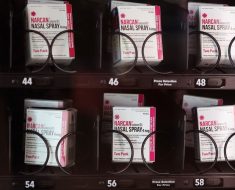(HealthDay)—Mail-based, at-home self-collection of cervicovaginal samples is valid for detecting high-risk human papillomavirus (HPV) among infrequently screened women, according to a study published online Nov. 5 in Obstetrics & Gynecology.
Andrea C. Des Marais, M.P.H., from the University of North Carolina in Chapel Hill, and colleagues recruited low-income, infrequently screened women to participate in an observational study. Participants provided two self-collected cervicovaginal samples (one at home and one in the clinic) and a sample collected by a clinician. Samples were tested for high-risk HPV; cervical samples were also tested by liquid-based cytology.
One hundred ninety-three women had conclusive high-risk HPV results for all three samples and cytology results. The researchers found that high-risk HPV prevalence among self-home samples (12.4 percent) did not differ significantly from the prevalence among clinician samples (11.4 percent; P = 0.79) or self-clinic samples (15.5 percent; P = 0.21). In all sample types, there was an increase in positivity for high-risk samples with increasing grades of cervical abnormality. High-risk HPV was detected by self-home samples in all identified cases of high-grade squamous intraepithelial lesions and cervical intraepithelial neoplasia 2 or worse. Most participants reported no difficulty understanding the instructions for self-collection and were willing to use self-collection again (93.6 and 96.3 percent, respectively).
“We found in this sample, all of the women who had high-grade lesions had HPV-positive home self-collection results,” a coauthor said in a statement. “We didn’t miss any of those high-grade cases by conducting home self-collection.”
Source: Read Full Article





